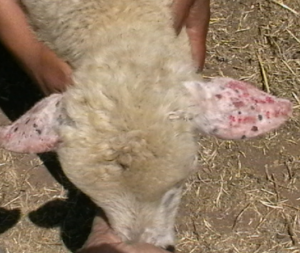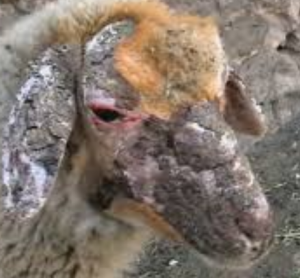8 Photosensitization
Primary Photosensitization
Author : Marion Karhatsu
Primary photosensitization occurs when a photodynamic agent is ingested, injected or absorbed through the skin. In animals, this is often related to the ingestion of plants that contain photosensitizing agents. The skin becomes abnormally reactive to ultraviolet light exposure (especially skin not protected by hair, fur or pigment) through the production of unstable, high-energy molecules created by the interaction of light photons with the agent. The resultant cell damage can cause edema, skin ulcerations and necrosis. Primary photosensitization is basically a toxin-induced, severe sunburn.


Clinical signs include severe irritation, restlessness, rubbing, as well as signs of sunburn: redness and swelling of affected areas followed by sloughing skin. Secondary skin infections are possible. Symptoms often first appear on the tips of the ears and are mostly localized to white or lightly pigmented areas. Treatment consist primarily of supportive care and avoiding sun exposure. Corticosteroids may be needed to address strong inflammatory responses. Lesions may resolve within 48 hours, but can take up to 6 months, depending on severity.
Plants that contain primary photosensitizing agents include Hypericum perforatum a.k.a. St. John’s wort (agent: hypericin) and Fagopyrum esculentum a.k.a. buckwheat (agent: fagopyrin). Plants of livestock and poultry veterinary importance are those belonging in the Umbelliferae and Rutaceae families. Examples are Ammi majus (bishop’s weed) and Cymopterus watsonii (spring parsley) that produce photosensitization in cattle and sheep, respectively (agents: furocoumarins/psoralens). Ingestion of A majus (snapdragons) and A visnaga (toothpick plant) seeds have produced severe photosensitization in poultry.

The condition is best prevented by good pasture and feed management to avoid the consumption of photosensitizing agents.

